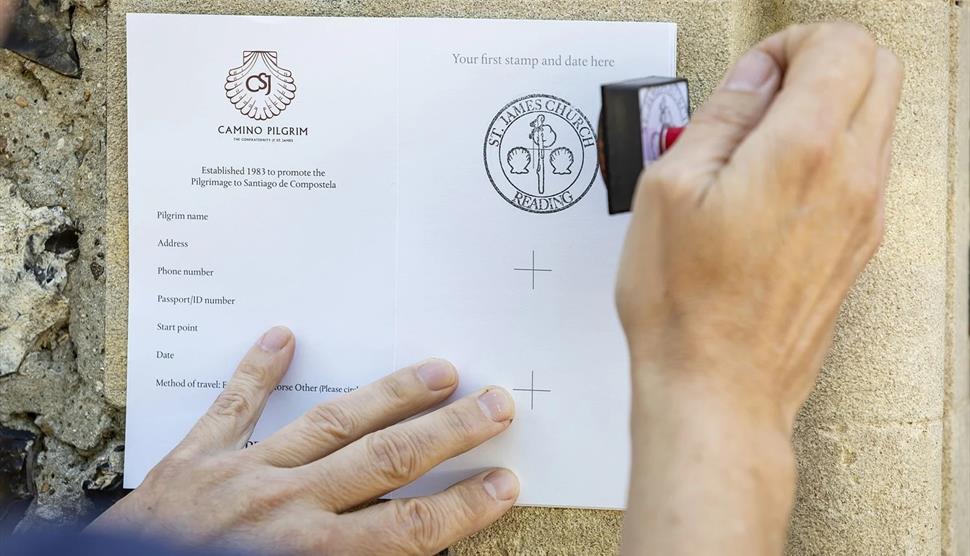You are here > Home > Things to Do > St James’ Way Walk

About
The St James’ Way is approximately 68.5 miles/110 kilometres long and has been designed for pilgrims who wish to walk from Reading Abbey, the centre of the cult of St James in England in the Middle Ages, to the port of Southampton, from where pilgrims may have sailed to France or Spain on their way to the shrine of St James at Santiago de Compostela in north-west Spain.
This route is mostly flat or undulating and presents no physical challenges. It goes through beautiful parts of the country and at times follows rivers and canals. On this route you will pass village churches, riverside pubs and historic sites.
The route is based on the Roman road from Silchester via Basingstoke to Winchester, and also includes the St James’ churches at Reading (shrine to St James inside), Bramley, which has wall-paintings including St James, and Upper Wield, as well as the former priory at Monk Sherborne, whose church became the parish church at Pamber (not to be confused with the Norman church at Sherborne).
From Alresford, the Way follows the St Swithun’s Way west to Winchester, England’s capital under the Saxons.
St Bartholomew’s Church has now replaced Winchester Cathedral as the official starting point of the Winchester to Southampton leg of the Camino Inglés, for pilgrims following the St James’ Way to Santiago de Compostela, in Spain.
Winchester Cathedral was a Benedictine foundation, of which several buildings, including the Pilgrims’ Hall, survive. Also Benedictine were St Mary’s Abbey, also called the Nunnaminster, of which some foundations can be seen, and Hyde Abbey, of which the Gateway remains, and St Bartholomew’s church is built of some of the stone. Nothing remains of the four friaries, though there are some fragments of the hospitals of St John and St Mary Magdalen. At the latter a 12th-century pilgrim burial showing signs of leprosy was found in 2012.
The route continues along the river Itchen past the Hospital of St Cross, which still gives out a dole of bread and beer to travellers, and past Southampton airport to Southampton, where a few fragments survive of the Augustinian priory of St Denis (also spelt St Denys). The medieval walls of Southampton remain, with the gateways where pilgrims embarked for destinations in France, Spain and the Mediterranean. Near the God’s House Tower the Maison Dieu of St Julian’s accommodated pilgrims.
Map & Directions
Click to Activate



 to add an item to your Itinerary basket.
to add an item to your Itinerary basket.




